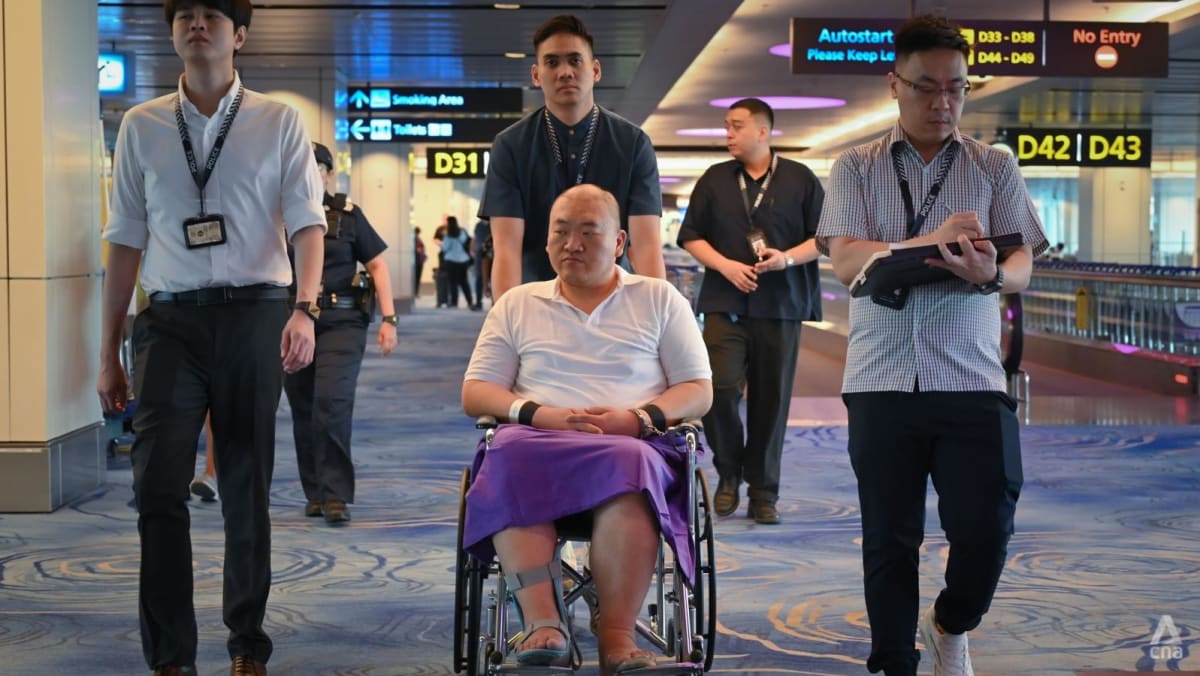Rare diseases present unique challenges for those affected, underscoring the urgent need for greater awareness and support.

Timely diagnosis and treatment of rare diseases depend on global and local action plans, says Ms My Linh Kha, senior vice president and general manager, Amgen, Japan Asia-Pacific division. Photos: Amgen
New: You can now listen to articles.

This audio is generated by an AI tool.
Rare diseases often impact patients in medical dramas but rarely surface in everyday conversations. Yet, they affect millions worldwide. More than 10,000 rare diseases impact around 400 million people, with the Asia-Pacific (APAC) region bearing the largest share – over 258 million people grapple with the challenges these ailments bring.
Rare Disease Day highlights the experiences of those living with such conditions, together with their families and caregivers, while championing better health outcomes. Observed on Feb 29 – the rarest day of the year – in leap years and Feb 28 in others, it also brings attention to the complexities of rare diseases and the gaps in care.
“Rare diseases place a significant burden on patients, families and caregivers,” said Ms My Linh Kha, senior vice president and general manager of biotechnology company Amgen’s Japan Asia-Pacific division. “Beyond health difficulties, they also face far-reaching socioeconomic consequences, from job loss to greater dependence on social and healthcare systems.”
THE LONG ROAD TO A DIAGNOSIS
 Delayed rare disease diagnosis can lead to a range of symptoms, including vision loss, pain and exhaustion, shares Ms Kha.
Delayed rare disease diagnosis can lead to a range of symptoms, including vision loss, pain and exhaustion, shares Ms Kha.
While around 7,000 rare diseases have been medically identified, only about 5 per cent have available treatments. Ms Kha noted that for individuals with a rare disease, obtaining a diagnosis can take years – sometimes decades. On average, patients wait around five years before receiving one.
“This delay can have a profound impact,” she added. “Individuals may experience symptoms such as vision loss, pain, exhaustion, and in severe cases, paralysis – all of which can make it difficult to work, manage daily tasks and severely diminish their quality of life.”
One example is thyroid eye disease, which affects an estimated 100 to 300 persons per 100,000 in Asia. This debilitating condition occurs when the body’s immune system attacks the muscles, fatty tissue and connective tissue around the eyes, leading to bulging eyes, double vision and eye pain. Because thyroid eye disease causes eyelid retraction, patients may find it hard to fully close their eyes, resulting in irritation and dryness. In severe cases, some must tape their eyelids shut to sleep. As the disease progresses, the risk of vision loss increases.
Ms Kha highlighted that thyroid eye disease impacts many aspects of daily life. Impaired vision can increase the risk of injuries at home and may lead to job loss and workplace challenges. Apart from the physical limitations, it can result in loneliness and isolation, as those affected may struggle to move around safely on their own. Relying on family and caregivers can further strain relationships, adding to the emotional and practical burdens they face.
DRIVING AWARENESS AND ACTION FOR RARE DISEASES
 Ms Kha believes that collaborative efforts among governments, healthcare providers and communities are essential for the development of sustainable rare disease policies.
Ms Kha believes that collaborative efforts among governments, healthcare providers and communities are essential for the development of sustainable rare disease policies.
The emotional toll of living with a rare disease is immense. Studies show that 42 per cent of patients experienced depression, while 23 per cent reported anxiety. Even after receiving a diagnosis, they continue to face limited treatment options and difficulties accessing or affording necessary therapies.
Recognising these challenges, Amgen – which served over 4.5 million patients across the APAC region in 2024 – partners with local rare disease patient groups and medical programmes to bolster community networks and enhance awareness.
One such initiative is its collaboration with the Global Healthy Living Foundation Australia, which led to the establishment of the Thyroid Eye Disease Education and Advocacy Hub. This platform offers educational resources and support, empowering patients and advocates to push for better healthcare access and new treatment options.
Amgen’s commitment to the rare disease community extends to the search for new treatments. “We are dedicated to driving scientific progress and developing treatments for patients with serious illnesses, including rare diseases that require urgent attention,” said Ms Kha.
While new treatments continue to emerge, millions worldwide still face barriers to obtaining medication, healthcare and essential support services such as funding, caregiving and social assistance.
For instance, Ms Kha noted that few countries in the APAC region have put in place rare disease policies or national plans, leaving patient organisations to bridge the gaps, often stretching their resources to the limit. A key step forward is for APAC nations to adopt global and local action plans that improve timely access to diagnosis and treatment for rare diseases, she added.
“When the healthcare community and policymakers work together to expand the availability of care, individuals with rare diseases and their families can look forward to a brighter future,” said Ms Kha.
Learn more about how Amgen is working to address the challenges of rare diseases.



















































